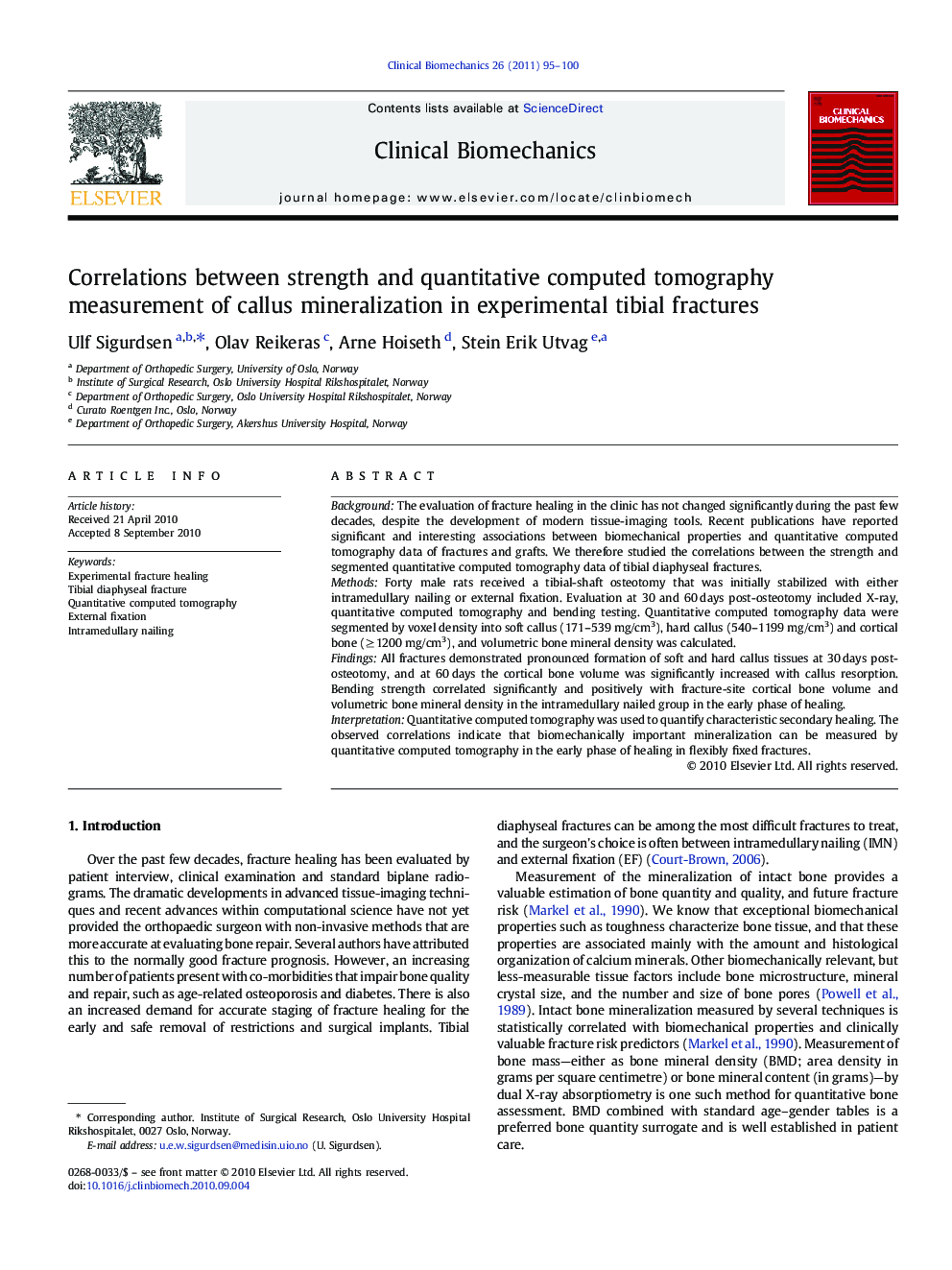| Article ID | Journal | Published Year | Pages | File Type |
|---|---|---|---|---|
| 4051012 | Clinical Biomechanics | 2011 | 6 Pages |
BackgroundThe evaluation of fracture healing in the clinic has not changed significantly during the past few decades, despite the development of modern tissue-imaging tools. Recent publications have reported significant and interesting associations between biomechanical properties and quantitative computed tomography data of fractures and grafts. We therefore studied the correlations between the strength and segmented quantitative computed tomography data of tibial diaphyseal fractures.MethodsForty male rats received a tibial-shaft osteotomy that was initially stabilized with either intramedullary nailing or external fixation. Evaluation at 30 and 60 days post-osteotomy included X-ray, quantitative computed tomography and bending testing. Quantitative computed tomography data were segmented by voxel density into soft callus (171–539 mg/cm3), hard callus (540–1199 mg/cm3) and cortical bone (≥ 1200 mg/cm3), and volumetric bone mineral density was calculated.FindingsAll fractures demonstrated pronounced formation of soft and hard callus tissues at 30 days post-osteotomy, and at 60 days the cortical bone volume was significantly increased with callus resorption. Bending strength correlated significantly and positively with fracture-site cortical bone volume and volumetric bone mineral density in the intramedullary nailed group in the early phase of healing.InterpretationQuantitative computed tomography was used to quantify characteristic secondary healing. The observed correlations indicate that biomechanically important mineralization can be measured by quantitative computed tomography in the early phase of healing in flexibly fixed fractures.
